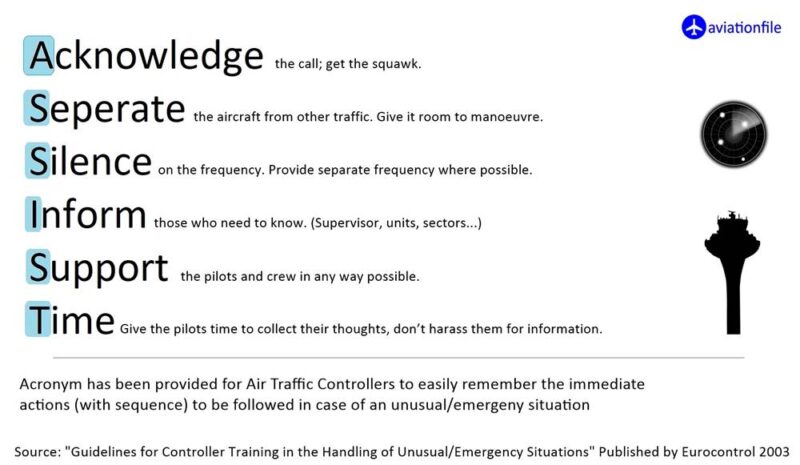Emergency Procedures for Air Traffic Controllers
Air Traffic Controllers (ATCs) are responsible for ensuring the safe and efficient flow of air traffic in the airspace they are responsible for. However, sometimes emergencies arise that require quick and decisive action from ATCs to ensure the safety of aircraft and passengers. In this article, we will discuss the emergency procedures that ATCs follow to ensure the safety of air traffic.
Declare an emergency: The first step in any emergency is to declare it. ATCs have the authority to declare an emergency and notify other ATCs, airport authorities, and emergency services. This step is crucial as it helps to ensure a coordinated response to the emergency.
Communicate with pilots: ATCs are responsible for communicating with pilots and providing them with information regarding the emergency. This may include providing the pilots with the location of the emergency, advising them of any changes to the flight plan, and providing them with any necessary information regarding the emergency.
Clear the airspace: In some emergencies, it may be necessary to clear the airspace to allow emergency services to operate safely. ATCs may instruct aircraft to hold, divert to another airport, or land immediately to clear the airspace.
Coordinate with emergency services: ATCs work closely with emergency services to coordinate their response to the emergency. This may include providing them with information about the location of the emergency, the type of emergency, and the number of aircraft and passengers involved.
Follow standard operating procedures: ATCs follow standard operating procedures when dealing with emergencies. These procedures are designed to ensure that ATCs respond quickly and effectively to emergencies while minimizing the impact on air traffic.
Maintain situational awareness: ATCs maintain situational awareness by monitoring the airspace and communicating with pilots and emergency services. This helps them to make informed decisions and respond quickly to emergencies.
Debrief and learn from the emergency: After an emergency, ATCs participate in a debriefing process to review their response to the emergency. This process is designed to identify any areas for improvement and to ensure that ATCs are better prepared to respond to future emergencies.

Tools and Technology Used by Air Traffic Controllers During Emergencies
Air Traffic Controllers (ATCs) rely on a range of advanced tools and systems to manage emergencies efficiently. These technologies enhance situational awareness, streamline communication, and support quick decision-making in critical situations. Key tools include:
- Radar Systems: Essential for tracking aircraft positions in real-time, radar systems provide ATCs with accurate data on altitude, speed, and location, ensuring precise navigation during emergencies.
- Automatic Dependent Surveillance-Broadcast (ADS-B): This next-generation surveillance technology delivers highly accurate aircraft data directly to ATCs and pilots, enabling faster responses and better coordination.
- Emergency Communication Channels: Dedicated radio frequencies and secure communication lines ensure uninterrupted contact between ATCs, pilots, and emergency response teams.
- Flight Data Processing Systems (FDPS): These systems help ATCs manage and adjust flight plans dynamically, ensuring optimal rerouting of other aircraft to clear airspace for emergency operations.
- Weather Monitoring Tools: Advanced weather radars and forecasting systems provide real-time data on hazardous conditions like storms or wind shear, allowing ATCs to guide aircraft safely.
In conclusion, emergency procedures are an essential aspect of the work of Air Traffic Controllers. These procedures help to ensure the safety of air traffic and passengers in the event of an emergency. By following these procedures, ATCs can respond quickly and effectively to emergencies while minimizing the impact on air traffic.
By leveraging these tools, ATCs can respond effectively to emergencies, ensuring the safety of passengers, crew, and aircraft.
References:
- Federal Aviation Administration. (2019). Emergency Management Handbook for Air Traffic Facilities. Retrieved from https://www.faa.gov/documentLibrary/media/Advisory_Circular/ATC_Emergency_Handbook.pdf
- International Civil Aviation Organization. (2018). Emergency Response Guidance for Air Traffic Services. Retrieved from https://www.icao.int/safety/ISD/Documents/ER_Guidance_ATS_Edition3.pdf


